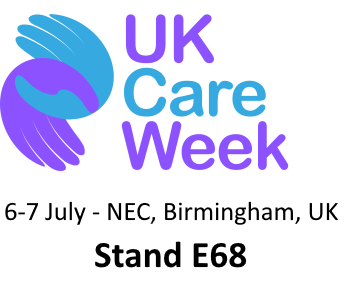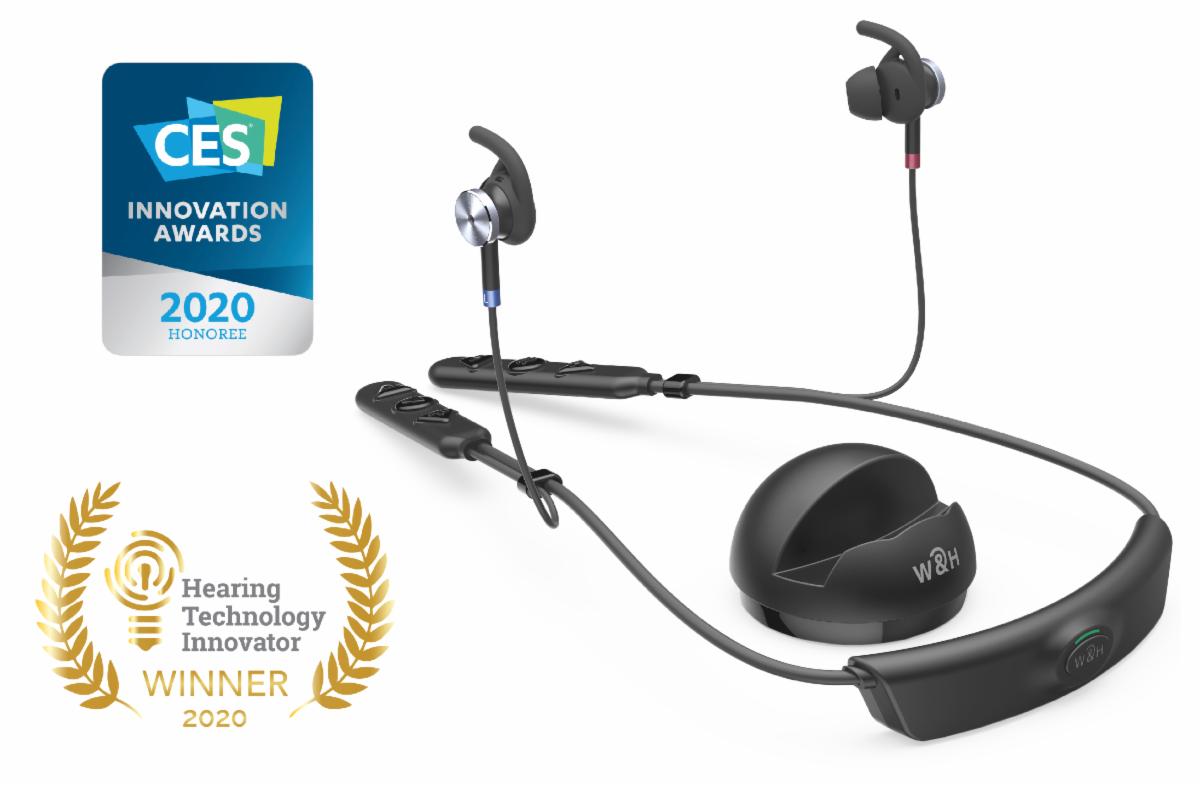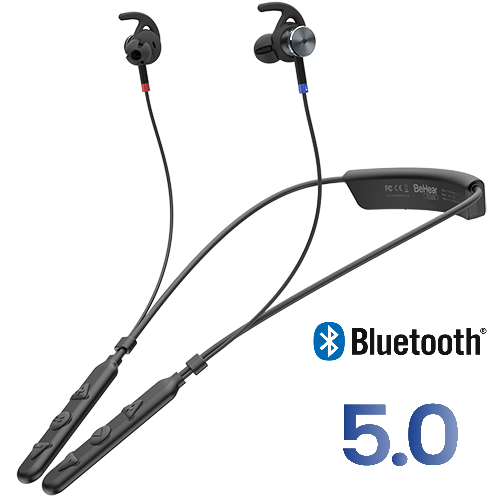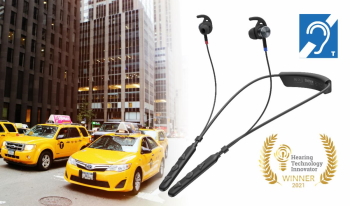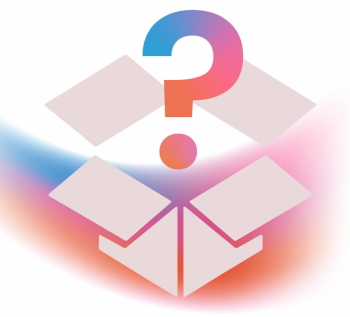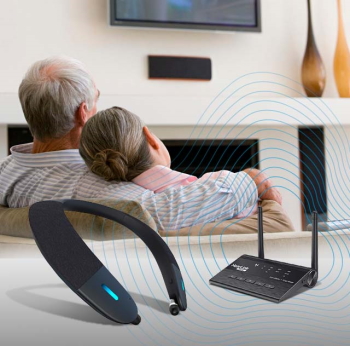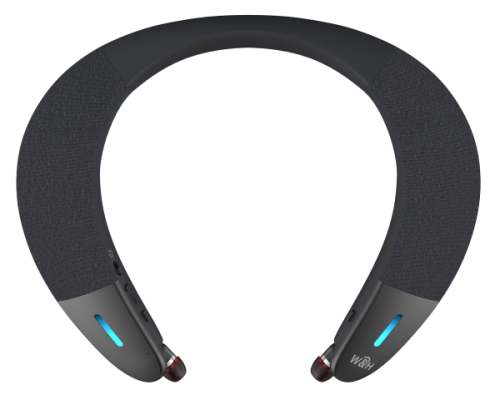July 2022 Newsletter
What a Confidence Booster!

When veteran Israeli sound enhancement developer Alango Technologies launched the BeHear product line nearly 7 years ago, we had a vision to create assistive hearing solutions that would benefit millions of people. Our dedicated team of engineers has worked hard to develop products that are easy to use, effective, multi-functional, and affordable. Many customers have shared their experiences with us (see reviews here), reinforcing that we are on the right track. But, when we recently received feedback from a Doctor of Audiology in the form of a video review and accompanying in-depth article about our newest product, BeHear SMARTO, it gave us a big confidence boost! Read more about it in the first article below, as well as more confidence-inspiring stories in the other sections.
ALSO IN THIS NEWSLETTER:
- American Doctor of Audiology Reviews SMARTO
- BeHear ACCESS is HSA Approved
- Taking it on the Road: Care Show in UK, TEDPA in USA
- “Hearing Loss for Dummies” published
Hope you’re staying cool these days!
The BeHear Team at Alango Technologies
BeHear SMARTO Expert Review
Steve Taddei, a Doctor of Audiology and Audio Engineer, recently reviewed the BeHear SMARTO hand-held sound amplifier. He posted a video on YouTube, and a more detailed article on the Hearing Tracker Web site. The former is probably sufficient for potential customers, but if you are a hearing professional, audio enthusiast, or sound engineer you will definitely appreciate the additional details in the written article. Both media include sound samples, so you can’t go wrong!
BeHear ACCESS is HSA Approved
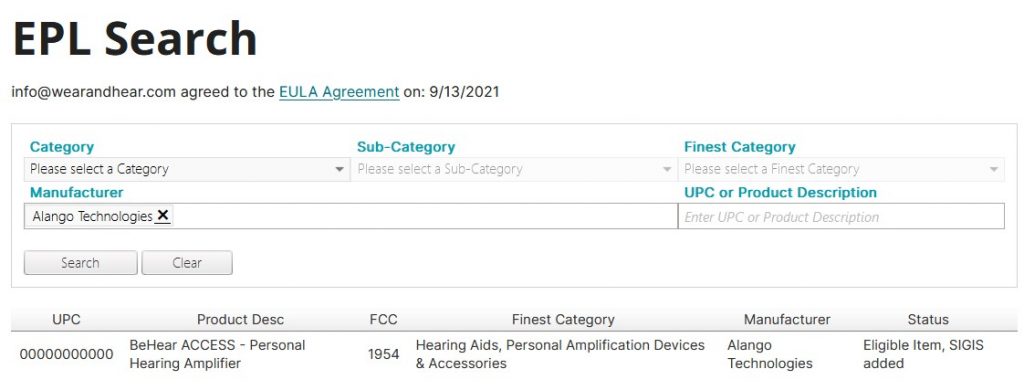
If you have an HSA account it is all the more reason to purchase a BeHear ACCESS hearing amplifier to help you hear better! An HSA is a type of savings account for Americans that lets you set aside money on a pre-tax basis to pay for qualified medical expenses. As a result you will spend less on your overall health costs.
BeHear Hits the Road
BeHear teams in the U.K. and the U.S.A. were on the road again (finally!) to demonstrate BeHear products live at two different tradeshows.
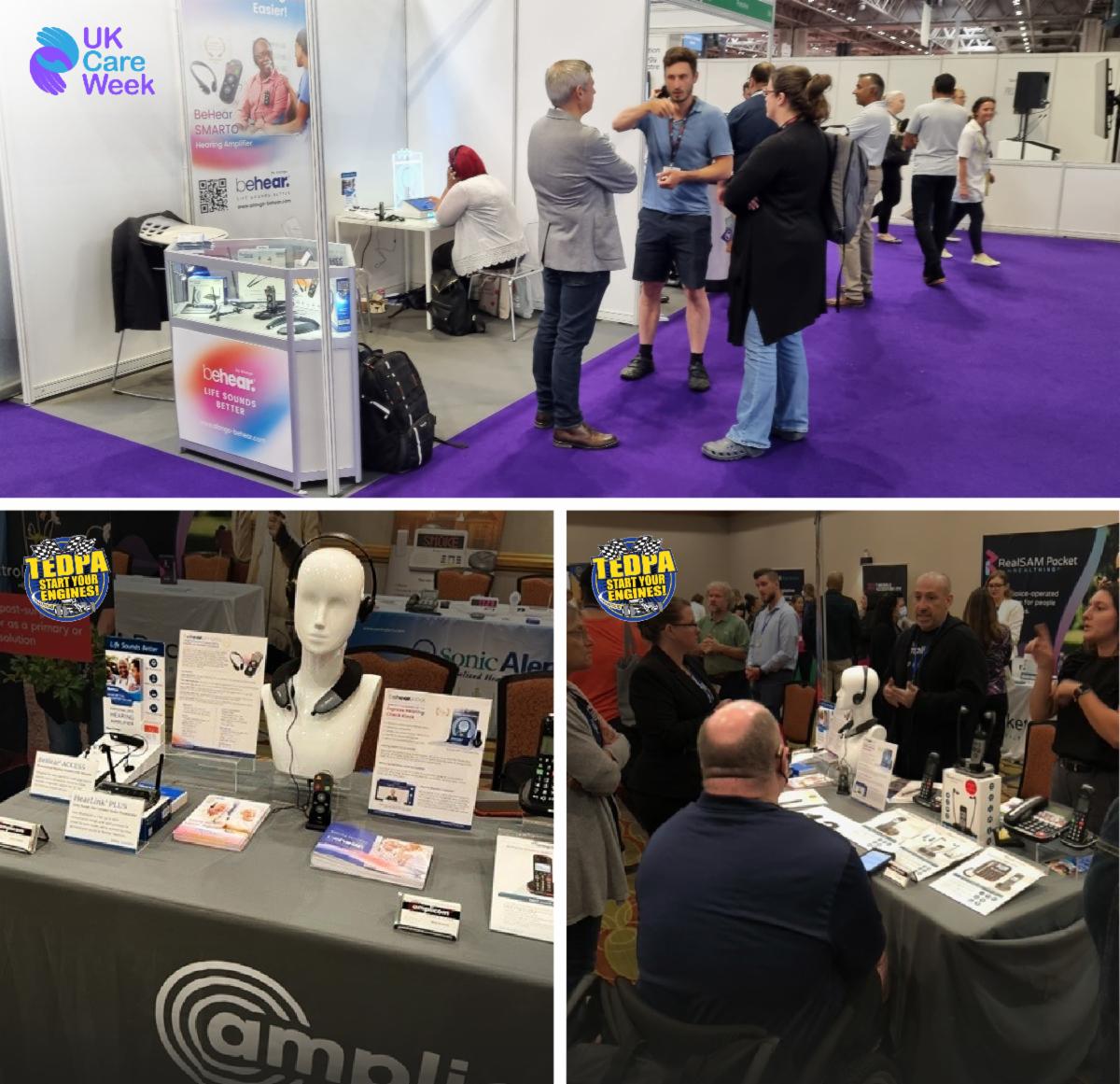
The UK Care Show in Birmingham (England) brought together care workers and administrators. Since staff retention is a major concern, in our speaking opportunity we positioned BeHear SMARTO as a good way to improve communication and relieve frustration, fatigue, and stress among caregivers. You are welcome to download our presentation on the topic.
We also exhibited at the Telecommunications Equipment Distribution Program Association (TEDPA) annual conference which took place in Indianapolis, Indiana (after a 2-year hiatus). Representatives from 27 States came to learn how to use their budgets to improve wellness for their constituents. BeHear products are already included in a number of States’ offerings. Contact us to find out if yours is one of them!
“Hearing Loss for Dummies” Book Published
Two of our favorite hearing research specialists, Frank R. Lin, M.D and Nicholas Reed of the Johns Hopkins School of Medicine, have just published a book entitled “Hearing Loss for Dummies“. If you or someone you care about suffers from hearing loss, you’ll find lots of useful information in this book. For example:
- Understanding how hearing works — and how it changes as we age
- Determining whether you need testing and, if so, where to turn
- Learning practical solutions for hearing better at home, at work, on the phone, and in restaurants and theaters
If you would like our monthly newsletters delivered directly to your inbox, subscribe here.
More Than Just A Hearing Amplifier

Barry Mishkind is a veteran broadcaster and editor at The Broadcasters’ Desktop Resource. He has also suffered from tinnitus for more than 50 years.
In his detailed review of BeHear ACCESS, recently published online, Barry listed his five criteria for a good set of headphones:
- They need to be comfortable.
- They need to reproduce audio clearly and cleanly.
- I like good noise reduction.
- The latency is not too long.
- The battery has to last long enough to be useful.
In his comprehensive article he details how BeHear ACCESS addresses and meets each criterion.
He summarizes his experience “…being able to tailor not only the levels but frequencies needed for each ear really does helps in a lot of ways. Furthermore, the other features make it a lot easier to hear everything from conversations to television programs. Especially welcome is the tinnitus masking feature.”
Overall, for any number of situations, it is entirely possible some users might even prefer the ACCESS II to traditional hearing aids. With an MSRP of $299, it certainly will not hit your pocketbook as hard.
Barry Mishkind, The Eclectic Engineer
BeHear ACCESS II with tinnitus masking is an excellent hearing enhancement device
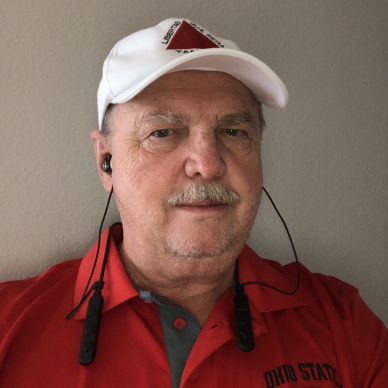
Michael Hayes, a long-time BeHear NOW user, learned that the new BeHear ACCESS model includes a feature designed to reduce the effects of tinnitus. He wrote us:
I have suffered from moderate hearing loss accompanied by tinnitus in my left ear for over 50 years due to inner ear nerve damage from an infection. Over the past 5 years I have experienced a measurable decrease in hearing in my right ear and an accompanying increase in tinnitus in that ear as well. I have tried numerous hearing aids over the years but none of them provided me with any improvement for my left ear and no reduction in tinnitus. Only when I tried the BeHear NOW with the personalized modulation technology that I gained some improvement in my left ear hearing.
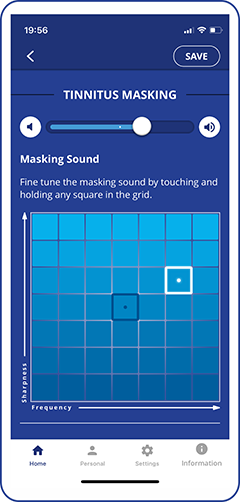
I installed the new BeHear ACCESS II application and ran the self test, set up my hearing profile, and then began the fine tuning of the tinnitus masking function. The setup was intuitive and within a few minutes I had chosen a masking tone that seemed to work best for both ears. The tinnitus masking function works well, albeit somewhat better for my right ear that has better natural hearing than my left ear that has the severe nerve damage.
In summary the BeHear ACCESS II with tinnitus masking is an excellent hearing enhancement device that I highly recommend for anyone who suffers from hearing loss and tinnitus.
I have experimented with far more expensive devices, (hearing aids), that in my opinion were inferior in performance to the Access II.
Michael Hayes, satisfied BeHear ACCESS customer
In conclusion, Michael states: “I am grateful to the staff at Alango for their dedication to hearing enhancement beyond the ordinary.”
Tinnitus Masking Therapy in BeHear
To learn more about the tinnitus sound therapy supported by BeHear ACCESS model II, watch the video below:
April 2022 Newsletter
In-Person Meetups are Back!
It’s been over two years since we participated in an international tradeshow so it is with particular excitement that we announce our involvement in UK Care Week. This event, including three days of virtual meetups and culminating in a conference and exhibition on the 6th & 7th July at NEC Birmingham, will bring together the care community to address the biggest challenges facing the care sector.
It is a perfect opportunity for us to showcase our newest member of the BeHear assistive hearing family, the BeHear SMARTO, which we will do at our booth (E68) and in our presentation entitled “Increase Care Staff Retention through Better Communication with Residents”.
Register here (entrance is free).
ALSO IN THIS NEWSLETTER:
♦ Last Chance for BeHear SMARTO Pre-order Discount
♦ Is Someone Close to You in Denial About Their Hearing Loss?
♦ Hearing Loops are on the (Google) Map!
♦ BeHear ACCESS Reviewed in Podcast
To get these newsletters sent directly to your inbox, register here.
Last Chance for SMARTO Pre-order Discount
SMARTO Will Soon Sell at Full Market Price
BeHear SMARTO, soon to be launched commercially, is a very powerful but simple to operate hearing amplifier. Designed to improve comprehension of live conversations, cell phone calls, and TV audio, it can be used by people with moderate-to-severe hearing loss who may be limited by mobility, vision, dexterity, or dementia.
SMARTO can be body-worn, hand-held, or placed on a table. It can be used straight out of the box (its large, colorful buttons make it easy to control volume and bass/treble balance), or customized with a dedicated app to suit the user’s unique hearing needs. Its unique directionality feature allows the user to focus on a specific speaker, or capture important sounds from all directions.
BeHear SMARTO has passed all checks in the pilot run, and we have authorized the completion of commercial production at the factory. We expect to start shipping to pre-order customers by the beginning of June.
If you haven’t placed your pre-order yet, don’t miss this last opportunity to benefit from a 25% discount off the standard price.
This limited offer will expire on May 15, so don’t wait!
Quick Way to Overcome Hearing Loss Denial
Many people are in denial about their age-related hearing loss. Not only is it hard to know what is not being heard, it is much easier to blame others or the environment for hearing difficulties. Sadly, at the end of the day, everybody suffers.

A quick way to determine if you or a loved one might need hearing assistance is by answering the following questions (culled from the ASHA – American Speech-Language-Hearing Association “Self Test for Hearing Loss“):
- Do you have a problem hearing over the phone?
- Do you have trouble understanding when two or more people talk at the same time?
- Do people complain that you turn the TV volume up too high?
- Do you have trouble hearing in noisy places?
- Do many people you talk to seem to mumble or not speak clearly?
If the answer to two or more of these questions is YES then it’s time to do something about it! A quick and inexpensive way is to try a BeHear device. With the integrated hearing assessment it is easy to determine independently just how much amplification is needed to hear (and to experience what it’s like to hear with that customized boost!). Our “Buy & Try” policy gives 30 days to try out the device, risk-free.
Getting help for hearing difficulty is sure to improve relationships, and should be as important as treating your vision. Don’t put it off any longer!
Hearing Loops are on the Map!
Hearing loop systems transmit wireless audio input via a magnetic field to telecoil receivers. These receivers are found in many high-end hearing aids, some dedicated headphones, and in BeHear ACCESS headsets. In a hearing loop system there is no interference, no reverberation, no background noise, just the original signal transmitted directly from the input, whether that is the microphone on a podium, the audio system in a theater, the microphone the cashier is speaking into at the bank, or the music from the concert hall stage. This closed system provides people, especially those with hearing loss, an excellent way to hear voice and audio signals clearly, even in noisy places or when the sound source is far away.
Hearing loop technology is common in Europe and the U.K. and is universally accepted as the international standard for hearing access. Installed base is growing rapidly in the United States as organizations such as HLAA (Hearing Loss Association of America) and others press venues to become compliant with the ADA (Americans with Disabilities Act).
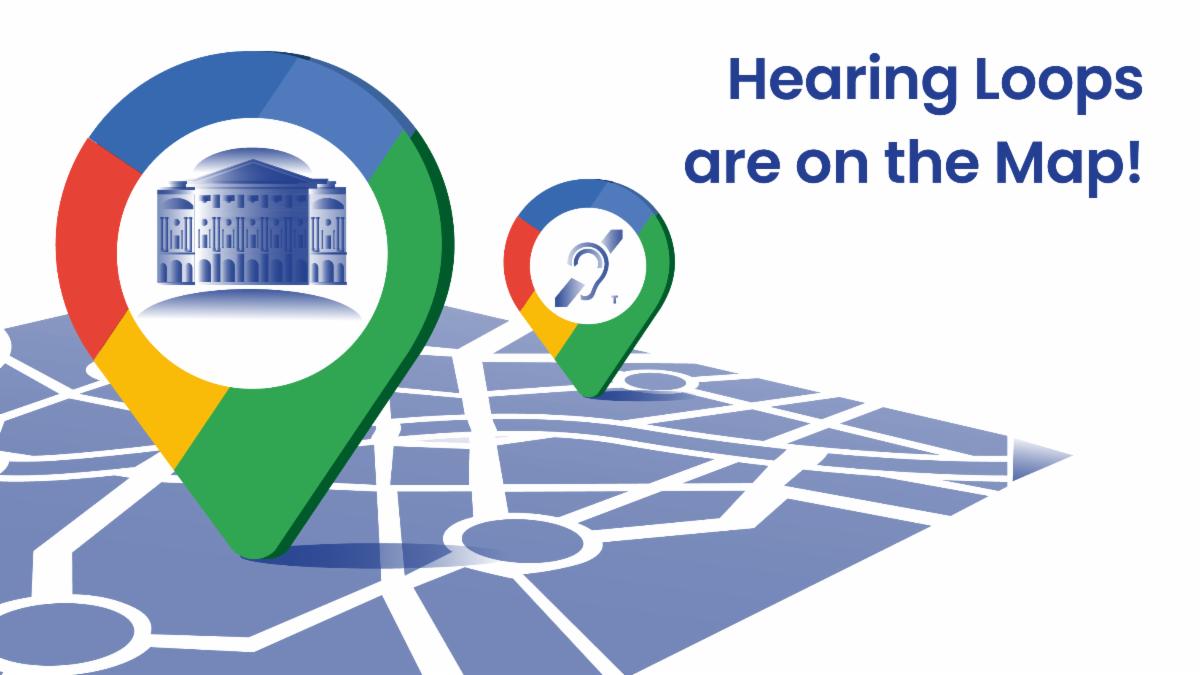
Did you know that thousands of locations that have hearing loops are now indicated in Google Maps? We just discovered that Google has added the assistive hearing loop attribute that indicates if somewhere, like a movie theater, house of worship, or library, has a sound system that is compatible with hearing devices (like BeHear ACCESS!) which support telecoil transmission.
- If you’re interested in a better hearing experience in public places, use the assistive hearing loop attribute when searching for the location. Then, when you arrive, set your BeHear ACCESS to Telecoil Transparent (for ListenThrough capability) or Telecoil Exclusive (for pure audio) and enjoy!
- If you’re a business owner or manager with a verified Business Profile on Google, you can add attributes to your Business Profile on Search and Maps.
BeHear ACCESS Reviewed in Podcast

Computer and Technology Radio is a long running consumer technology podcast hosted by Marsha Collier and Marc Cohen. In a recent edition the team reviewed BeHear ACCESS Model II. Click here to listen (the review is at minute 38:38).
BeHear ACCESS Model II Released
Tinnitus Masking Therapy Now Included in BeHear ACCESS Hearing Amplification Headsets
Alango Technologies, a leading independent supplier of DSP voice and audio enhancement software technologies for the communication industry, announced the release of a new, advanced version of its BeHear® ACCESS hearing amplifier featuring an option for basic sound personalization without using an app, customizable tinnitus masking therapy, increased amplification without feedback, and easier pairing based on Bluetooth® 5.0.
Inexpensive, Stylish, Multi-Functional, Self-Fit Hearing Amplifier Reconnects People to the Individuals and Sounds They Love
This new version of a personalizable hearing amplifier by an Israeli start-up aims to help the millions of people worldwide with untreated hearing loss which, consciously or not, oftentimes leads to isolation, depression, and even dementia. In contrast to expensive hearing aids that people cannot afford or do not want, BeHear ACCESS is inexpensive, stylish, multi-functional, and self-fit. With the release of Model II and its advanced features, BeHear ACCESS provides an even simpler way to be part of the conversation.
What is BeHear ACCESS?
BeHear ACCESS is a sophisticated hearable that provides personalized hearing amplification users can self-tune in real time. While it looks like a standard Bluetooth headset, the device is powered by Alango Technologies proprietary audio enhancement and customization software, giving users hearing aid quality technology at a fraction of the price. ACCESS belongs to the BeHear line of smart hearing amplifiers, designed to help those with mild-to-moderately-severe hearing loss hear better during face-to-face conversations, mobile and video calls, and when listening to television, music, podcasts, and sounds in nature. This already sophisticated product received an upgrade that added several new benefits.
Tinnitus Affects More than 10% of the Population
Continuous or spontaneous ringing, noise, or other internal sound in the ears is a medical condition known as tinnitus. It affects more than 1 in 10 people and in many cases is reported as disabling. Tinnitus masking therapy is a popular approach for alleviating the symptoms. It consists of playing an external sound that perceptually resembles the internal, phantom sound, but has a slightly louder volume so that the internal sound is not heard because it is “masked” by external stimuli. Tinnitus sufferers may turn to professionals to help define the appropriate masking noise, but this is often a lengthy and expensive procedure. The new version of BeHear ACCESS supports adjustment of the masking noise by the user, who determines its sharpness, tone, and volume to achieve a more accurate result, quickly, independently, and inexpensively.
- Personalized Amplification Directly from the Headset
For those who prefer not to use the dedicated BeHear smartphone app, it is now possible to adjust the emphasis on bass or treble (low and high frequencies) in real time, directly from the headset’s control buttons. This “tone control” is available for all listening modes: live hearing, cell phone/video calls, and music/audio streaming. - Support for Bluetooth 5.0
Providing a more stable connection than version 4.2 (used in the earlier model), BeHear ACCESS is now easier to pair and supports “over the air” firmware updates to effortlessly introduce new features to existing customers, thanks to Bluetooth version 5.0. - Increased Loudness
Users who need the full amount of gain provided by BeHear ACCESS (42 dB) will appreciate the new formula, which allows higher amplification without feedback.
Another Milestone in the Democratization of Hearing
“As part of our efforts to enhance wellness through advanced technology, we have developed a method making the process of choosing the most comfortable tinnitus masking sound as simple and intuitive as possible, allowing tinnitus sufferers to try the tinnitus masking therapy without spending a lot of time and money. Our devices may also help where hearing aids cannot, due to the limited frequency range of hearing aids, which cannot mask the high-pitched sound common to tinnitus.”
Dr. Alexander Goldin, CEO and Founder of Alango Technologies
About Alango Technologies
Alango Technologies, Ltd. (www.alango.com) has been developing sound enhancement technologies since 2002, selling over 60 million software licenses that improve the audio experience in automotive, entertainment, and smart home applications around the world. Realizing the importance and opportunity of combining the sound enhancement technology found in hearing aids with the advances and costs in the consumer electronics world, the Company is now using its field-proven expertise in sound technology to create products for personal hearing enhancement: the “BeHear” product line (www.alango-behear.com). With over 10,000 BeHear units sold to date, the direction is clear: people want inexpensive, stylish, multi-functional, and self-fit solutions to keep them in the conversation.
#
BeHear is a registered trademark of Alango Technologies, Ltd. in the United States. All other trademarks are the property of their respective holders.
This press release was also published on PRlog: https://www.prlog.org/12909301-tinnitus-masking-therapy-now-included-in-behear-access-hearing-amplification-headsets.html
January 2022 Newsletter
Here’s an Idea for a New Year’s Resolution…
 Our first two articles in this January 2022 newsletter describe how individuals have used their personal experiences to improve the quality of life for many people. We hope they inspire you to share your journey to hearing health with others.
Our first two articles in this January 2022 newsletter describe how individuals have used their personal experiences to improve the quality of life for many people. We hope they inspire you to share your journey to hearing health with others.
Awareness and education about hearing loss are the first steps on the path to a more equitable environment for all, and we would be happy to serve as a platform for you to share your story. Let us resolve together to normalize hearing loss treatment, and support those who need hearing assistance. Do you have an idea? Let us hear it!!!
IN THIS NEWSLETTER:
♦ What one woman has achieved for many
♦ “El Deafo”: now an educational and entertaining animated series for children
♦ Bonus features in BeHear ACCESS
♦ New BeHear branding
♦ Great savings on refurbished BeHear PROXY TV watching bundle
To get these newsletters sent directly to your inbox, register here.
“It was easier for me to change the world than it was to lower my standards.”
Janice Lintz wanted her young daughter to experience the full spectrum of culture and mainstream education provided in New York City, despite her hearing loss. While on a visit to London Mrs. Lintz learned that taxi cabs there were outfitted with hearing loops, which allowed those with high end hearing aids to hear conversations clearly.
While popular in Europe, hearing loops were not widely used, even though ADA legislation passed in 1990 mandated assistive listening technologies for public places. Today, thanks to Mrs. Lintz’s efforts, New York City taxi cabs, subway information booths and call boxes, Broadway theaters, museums, and baseball stadiums are on the long list of those who host the induction loop technology. Read more about her efforts, here.
We applaud activists like Janice Lintz for refusing to accept the status quo when it comes to quality of life. We are proud to support Telecoil in our BeHear ACCESS hearing amplifiers.
Animated Adaption of Award-Winning Graphic Novel
Perhaps you are a parent of a child with hearing loss, or an educator wondering how best to integrate that child into the classroom. This animated series, now streaming on Apple TV+, is a great way to educate the uninitiated and normalize behavior surrounding treatment of children with hearing loss. Highly recommended!
3 Hidden Features of BeHear ACCESS
Maybe you have heard about BeHear ACCESS, or even already own one. But did you know about these special features, exclusive to it in the BeHear line?
- SoundFocus™ – Choose your direction of interest (narrow, wide, omni). Important sounds will be amplified based on that input range only. Very helpful when you want to zero-in on your conversation partner, and not the whole room!
- Support for Unilateral Hearing – In the CROS and BiCROS implementation in BeHear ACCESS, sound that reaches the microphones on the non-hearing side is transferred to the speaker in the ear bud of the hearing ear. This function helps people with unilateral hearing to enjoy stereo audio content, such as music, as well.
- Eliminating “Own Voice Echo” – A typical downside of wearing a pair of earbuds is the “occlusion effect”; a perceived echo of your own voice when your ear canal is sealed by the device. A four-step slider in the BeHear app allows you to control how much you hear yourself when wearing the BeHear ACCESS headset.
BeHear is Being Rebranded
Did you notice that our logo has changed? The new design symbolizes the gradual hearing amplification offered in our products, represented by a thickening of the lines in each successive letter:
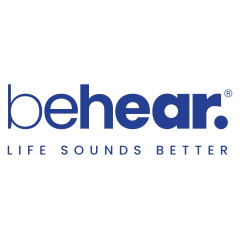
We are also simplifying our brand hierarchy by phasing out the use of “Wear & Hear” and “W&H”. Instead, our registered trademark “BeHear” will be the brand name for all our hearing enhancement products. As a result, our product names are now: BeHear.ACCESS , BeHear.PROXY, BeHear.SMARTO, etc.
Our slogan “Life Sounds Better” remains as we are still committed to our original mission: to bring affordable, high-quality, self-fit hearing enhancement products to market.
Changes to our Web site and product packaging will happen gradually, over the next few months. Come take a look to see how we are progressing…
Great Savings on BeHear PROXY TV Bundle
Treat yourself to clear, crisp TV dialogue and superb stereo sound with this refurbished* wireless neck speaker and Bluetooth audio transmitter. Your ears will thank you twice: once for fantastic sound and once for keeping them free!
Get a 25% discount when you purchase a refurbished BeHear PROXY with HearLink PLUS.
*Refurbished units are used but cleaned, tested, and fully updated.
July 2021 Newsletter
BeHear technology advancements
Articles in this issue include:

♦ NEW RELEASE: BeHear.ACCESS just got new hyper-advanced features normally only found in the most sophisticated hearing aids.
♦ “I never imagined I would love BeHear PROXY more than my Dyson!”- BeHear.PROXY video review.
♦ BeHear EasyListen™ -hear better with the technology that slows down speech in real time.
To get these newsletters sent directly to your inbox, register here.
The BeHear.ACCESS hearing amplification headset gains hyper-advanced hearing aid functionality
Alango Technologies, a leading independent supplier of DSP voice and audio enhancement software technologies for the communication industry, announced the release of a new, advanced version of its BeHear.ACCESS hearing amplification headset.
ACCESS is a hearable that provides personalized hearing amplification users can self-tune in real time via the companion app. ACCESS looks like a standard Bluetooth headset, but the device is powered by Alango Technologies proprietary audio enhancement and customization software, giving users hearing aid quality technology at a fraction of the cost. ACCESS belongs to the BeHear line of smart hearing amplifiers, designed to help those with mild-to-moderately-severe hearing loss hear better during face-to-face conversations, mobile and video calls, and when listening to music and sounds in nature.
This already sophisticated product received an upgrade that added hyper-advanced hearing aid functionality: 3 features that are normally found only in top-of-the-line hearing aids. Users can define the direction from which to amplify and clarify important sounds, as well as the extent to which they hear their own voice. Additionally, people with unilateral or “single-sided” hearing will benefit from new CROS/BiCROS functionality, which transfers sounds from the non-hearing side to the hearing ear.
Advanced hearing aid functionality: SoundFocus™ for better understanding of speech in noise
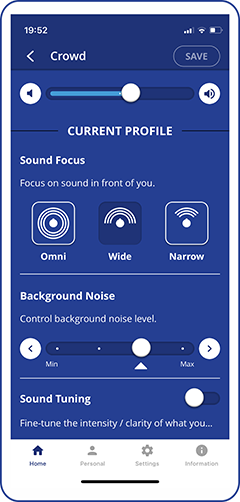
Difficulty understanding conversation in noisy environments is a widespread problem. Standard hearing amplifiers increase the volume of all sounds. SoundFocus, on the other hand, adds a new level of customization on top of the existing ACCESS background noise reduction feature. Users can now define which sounds will be amplified by choosing amongst three degrees of directionality:
- “Narrow” focuses in on sound directly in front of the user. This setting is best for one-on-one conversations, especially in noisy environments.
- “Wide” amplifies sound in a 180-degree half-circle in front of the wearer. It is useful when larger groups are conversing.
- “Omni” collects important sounds from all directions, suitable for example, when outdoors or at a concert.
Advanced hearing aid functionality: alleviating the “My Voice Echoes” perception
A typical downside of wearing any pair of earbuds is the “occlusion effect”; a perceived echo of your own voice when your ear canal is sealed. BeHear.ACCESS offers maximum comfort with a new feature in the W&H BeHear app that allows users to control how much of their own voice they hear.
Advanced hearing aid functionality: support for unilateral hearing (CROS/BiCROS)
Features correcting for unilateral hearing loss are typically found only in high-end hearing aids. Many people avoid using hearing aids due to their high cost, social stigma, difficulty in tuning them, etc. Implementing CROS/BiCROS in BeHear.ACCESS provides those with single-sided hearing the ability to choose this hearable, rather than being limited to hearing aids as a solution.
When activated, the function takes effect for all ACCESS hearing modes: Personal Hearing, Mobile Calls, and Audio Play. Sound from the non-hearing side is transferred to the speaker in the ear bud of the hearing ear. Streamed stereo audio is mixed automatically down to mono and reproduced in the functional ear, thus allowing people to enjoy the full sound spectrum without missing out on sounds that would have fallen on the damaged ear.
Technology can help overcome our bodies’ limitations
“Hearing well in noisy environments is always a challenge, but especially so for those with hearing loss,” says Dr. Alexander Goldin, Founder and CEO of Alango Technologies. “We are democratizing hearing, making even advanced features like CROS/BiCROS available in a hearable that is affordable and easy to use. This is deeply satisfying.”
About Alango Technologies
Alango Technologies, Ltd. has been developing sound enhancement technologies since 2002, selling over 60 million software licenses that improve the audio experience in automotive, entertainment, and smart home applications around the world. Realizing the importance and opportunity of combining the sound enhancement technology found in hearing aids with the advances and costs in the consumer electronics world, the Company is now using its field-proven expertise in sound technology to create products for personal hearing enhancement: the “BeHear” product line.
Also published online on MarketWatch.
I can listen to a podcast whilst mowing the lawn!
Before buying the BeHear ACCESS, I had NHS behind-the-ear hearing aids for five years and needed them to be readjusted after three. This required waiting for an appointment with the audiologist. Luckily that was before Covid and the lockdowns. One of the great things about the BeHear hearables is that if I feel my hearing has deteriorated, I can just use the built-in hearing assessment any time I like (lockdown or not) and save the settings in the App’s library.
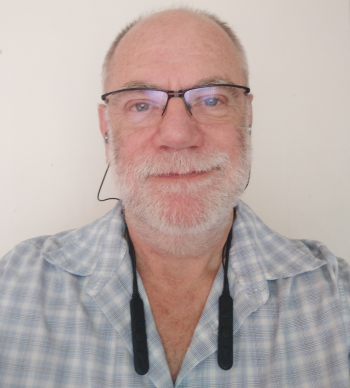
My original reason for moving on from my hearing aids, was I wanted to use Bluetooth. My hobby is Family History and our U3A group face to face meetings had had to be cancelled during lockdown, so we trialed Zoom meetings with great success. Unfortunately, my laptop sound is not of sufficient quality or level for my hearing, and I was losing a lot of the conversation.
I researched a number of available Bluetooth adapters such as neck loops as well as hearables products, and although there are other hearables that also have a self-assessment feature, the BeHear wearables looked to be the only ones that could offer the range of features I was looking for and the level of audio gain that my high frequency hearing loss required.
When I had my NHS (National Health Service) hearing aids readjusted previously I had also had the Telecoil feature enabled as I had found theatre acoustics and reverberation a problem. The BeHear ACCESS provided the perfect solution with the in-built Telecoil.
Having had the BeHear ACCESS for a while now, I have been very pleased with the purchase. There are a number of activities that have improved that I had not considered originally; for example, I can listen to a podcast whilst mowing the lawn or adjust the sound settings on the fly for a difficult sound situation. The wind noise (with or without the supplied wind mufflers) is much less of a problem than with the BTE.
With the extra boost these give to my high frequency hearing, I can appreciate bird song again.
Finally, my BTE hearing aids pick up unwanted noise from behind. This is particularly bothersome in a restaurant. Sitting with my back to a wall doesn’t solve the problem as the hard surface reflects the sound onto the hearing aids. With lockdown coming to an end I am looking forward to enjoying restaurants and theatre shows.
Negatives are few and small. The NHS hearing aids are more comfortable; I did find the earbuds a little difficult to get used to and had to use the smallest size (perhaps I have small ear canals) and they can make my ears sore if I have them in all day. The Bluetooth range would be better if it was version 5.0 rather than Version 4.2, but connection can be made to two devices e.g., laptop and phone concurrently, which is really useful.
April 2021 Newsletter
Hear what you see with BeHear
♦ Shattering disability stigma for World Hearing Day with Israeli BeHear technology enabling self-administered hearing screening
♦ BeHear ACCESS is part of the hottest new technology trend called hearables
♦ How can you avoid using our products?
To get these newsletters sent directly to your inbox, register here.
Alango – Wear & Hear Products Win Top Honors in NPTA Program
9th Annual New Product & Technology Awards (NPTA) Program Recognizes Two Wear & Hear Products

Haifa, Israel – December 28, 2020 – Alango – Wear & Hear was a two-time winner in the 2020 New Product & Technology Awards. The BeHear ACCESS assistive hearing headset received a Gold Award in the Communication Devices category, and the BeHear PROXY assistive hearing neck speaker received a Gold Award in the Lifestyle Assistive Devices category. The program, presented by the Mature Market Resource CenterSM, a national clearinghouse for the senior market, is the first awards program of its kind to recognize the most innovative products & services for older adults and their families.
BeHear ACCESS Assistive Hearing Headset Recognized in the Communication Devices Category; BeHear PROXY in the Lifestyle Assistive Devices Category
“We are pleased that our efforts to develop life-changing, high-quality, affordable, multi-functional, self-fit hearing solutions have been recognized in the 9th annual New Product & Technology Awards program this year,” stated Dr. Alexander Goldin, CEO and Founder of Alango Technologies. “Many aspects of physical, emotional and even mental health are impacted by the ability to hear. For us, these are more than products, they are a gateway to quality of life, health and wellness for those who have lost them due to problems with their auditory system.”
Entries were judged by a distinguished panel of mature market experts from across the United States for overall excellence of design, content, creativity and relevance to the senior market.
BeHear ACCESS is a Personalizable Assistive Hearing Device
BeHear ACCESS is a stylish, affordable, multi-functional, self-managed hearing enhancement device for mild-to-moderately-severe hearing loss. Housed in a high-quality Bluetooth stereo headset, it features advanced technology for personalized amplification of important sounds, based on a self-administered hearing assessment. The headset can be customized in real-time to suit all types of hearing situations: live conversations, mobile calls, music streaming, TV watching, sounds in nature, and more. Two built-in Telecoil receivers ensure best possible hearing in locales equipped with hearing loop technology.
BeHear PROXY Makes TV Watching Enjoyable Again
BeHear PROXY is a self-fit hearing amplifier that looks (and functions) like a standard Bluetooth stereo neck speaker, providing a rich listening experience for television watching, gaming, and music streaming. With the help of its extractable earphones and a dedicated smartphone app, it also provides personalizable amplification for live conversations and hands-free mobile calls. Together with the HearLink® PLUS Bluetooth audio transmitter it provides unmatched accessibility and improved language comprehension for television programs, with perfect audio-video synchronization. It is suitable for use with or without hearing aids.
About Alango Technologies
Alango Technologies, Ltd. (www.alango.com) has been developing sound enhancement technologies since 2002, selling over 50 million software licenses that improve the audio experience in automotive, entertainment, and smart home applications around the world. Realizing the importance and opportunity of combining the sound enhancement technology found in hearing aids with the advances and costs in the consumer electronics world, the Company is now using its field-proven expertise in sound technology to create products for personal hearing enhancement: the “Wear & Hear” product line (www.WearAndHear.com).
BeHear, HearLink, and Wear & Hear are registered trademarks of Alango Technologies, Ltd. in the United States. All other trademarks are the property of their respective holders.
###
Netflix Subtitles Are No Longer Necessary
I received my new hearing device about 10 days ago. The first time I put it on I exclaimed to my carer “amazing! I didn’t know how much my hearing has deteriorated.”
Shayna Orbaum, satisfied BeHear ACCESS customer
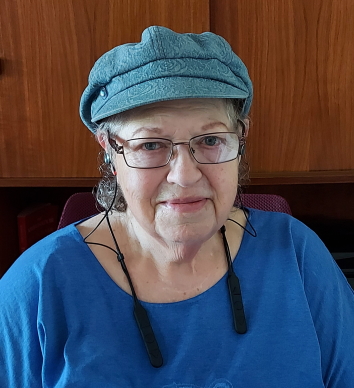
In April of this year an article about our assistive hearing products was published in The Jerusalem Post, Israel’s most-read English news website and best-selling English newspaper. As a result, we were flooded with inquiries and purchase orders for our products in our local market. One such customer, Mrs. Shayna Orbaum, filled out our customer feedback form. Her comments are reprinted below, with permission.
Before I was able to use the device I had to do the set-up, which included performing my own assessment of how each ear received the different sounds and tones. And also pairing it with the Bluetooth on my smartphone.
The accompanying instructions are very clear with pictures and big writing. Very easy to follow.
I am able to enjoy TV so much more.
I found myself tuning in more and more to Netflix because there I could read the subtitles. I still love Netflix, but now am able to pick out movies from the VOD library and hear every word loud and clear.
I used to have the volume up to about 45, when now I don’t need to raise the volume to more than 28, which is comfortable for my carer.
Phone calls: what a pleasure to be able to hear so well. I don’t even have to hold the phone to my ear. The phone sits on the table or desk and I just speak normally as though I am speaking to someone nearby. I still have to try out the slow speaking mode.
I have tried medical hearing aids about 3 years ago. I just could not adjust, always hearing an echo or other noises. I went back to the audiologist about 6 or 7 times and it was determined that my ear canals are small and hearing aids are not suitable for me. I was refunded the 8,000 shekels without any problems.
I thank Hillel Fuld for his article in the Jerusalem Post about Wear & Hear.
Keep TV Volume Lower; Converse without Asking to Repeat
The measure of the BeHear Access’s capability was my wife’s request that I put it on any time she could tell I wasn’t wearing it.

Bruce Brown, editor at HealthTech Insider, recently reviewed the BeHear ACCESS personalizable hearing amplifier. With his moderately severe mid-to-high-frequency loss in both ears, Mr. Brown was well-positioned to benefit from the assistive hearing headset, which has a fitting range of mild-to-moderately severe.
He reports:
“The BeHear Access hearables improved my ability to understand what my wife was saying without always asking her to repeat herself. We could both watch TV at a reasonable audio volume as I could just crank it up a bit with the hearable’s volume control.”
The COVID-19 pandemic is disturbing lifestyles for most, if not all, of us. Those with hearing loss may feel particularly affected due to social distancing, which exacerbates hearing difficulty, increasing frustration during communication attempts. Mr. Brown was able to appreciate the Wear & Hear BeHear technology in these situations. He writes:
I used the hearables’ Bluetooth connection successfully for smartphone calls and video conferences. Still, in these days of self-imposed residential sequestering, the most telling benefit for me was in conversation and watching television.”
Reducing the Curse of Isolation for People with Hearing Loss
by Dr. Alexander Goldin
♦ Social isolation is a fundamental health-related problem. This excellent article gives a lot of information about how social isolation may be related to hearing loss.
In these turbulent times brought on by the COVID-19 virus, lives of people with disabilities may be even more difficult than usual. Hearing loss greatly limits our ability to communicate. People with hearing loss often utilize other channels of information, such as lip reading, body language, and other visual cues, or even the sense of touch, to compensate for the lack of information typically received from a healthy auditory system. These days, such people may require live, face-to-face interaction with others much more than people with normal hearing. Isolation caused by preventive measures against spreading the virus deprives them of those additional information channels. While some of them can live almost normal lives in good times, compulsory physical isolation may significantly and disproportionately exacerbate their problems. It is a well-known scientific fact that hearing loss is a major health factor leading to social isolation, depression, cognitive decline, and premature dementia. If the hearing loss is not addressed in a proper and timely fashion this process of decline can accelerate rapidly.
Traditionally, hearing loss has been treated through the use of hearing aids. However, with less than 20% of hearing-impaired people in the U.S. using hearing aids, we can surely say that hearing aids have failed to provide a comprehensive solution. This is, mainly, due to 4 main factors:
1. Price: Hearing aids are extremely expensive
2. Social stigma: People don’t like hearing aids, thinking they make them look older or handicapped.
3. Limited functionality: Basic hearing aids provide hearing amplification only. Today, the most expensive, top-of-the-line hearing aids allow the wearer to make phone calls, but the quality of sound and the frequency range is still far from perfect.
4. Time to set up and tune: Hearing aids are distributed and tuned by professionals, requiring between 4-7 visits to get them adjusted properly.
In today’s reality of limited mobility and closed or restricted access to audiology services, the fourth factor is becoming a real bottleneck, even if the first three problems are somehow resolved (e.g., if high end hearing aids are distributed for free and people don’t care about how they look). For many people there is simply no way to get help. Hearing loss is not considered a life-threatening condition. Of course, it is not, but the consequences of not treating it are. The situation may become critical as cognitive decline may happen quickly and irreversibly for elderly people. We’d better not wait until too late and try to get them help ASAP.
We feel that our BeHear line of Personalized Hearing Headsets provides a good, comprehensive, and timely solution for quickly getting help for hearing loss these days. These hearables provide an advanced, no compromise, yet affordable, easily-to-operate, and fully personalizable hearing solution. And the great news is that personalization of our hearing amplification headsets does not require any professional service. It can be done easily by the user or his/her friends or relatives through a simple, intuitive, and free smartphone application.
Our BeHear hearing amplification headsets address all aspects of voice communication:

1. These hearables resolve difficulties of face-to-face communication between people confined inside their homes. Being able to communicate with a hearing-impaired person without raising your voice or, from the impaired side, without asking the speaker to talk louder, clearer, etc., may greatly reduce otherwise quickly accelerating stress and mutual antagonism. BeHear hearing amplification headsets can be a family peace saving option in many such cases.
2. Many seniors are prevented from communicating in person with their families and are relying on phone conversations to stay in touch. For those with hearing loss it is more difficult to understand phone speech because they do not have the visual cues afforded by in-person conversation. Also, phone amplification options and the sound quality of modern phones are limited. The sound options of mobile phones may also not allow suitable personalization. BeHear hearing amplification headsets resolve these problems by enabling mobile phone calls with high quality sound which is optimized for the user’s specific hearing loss. They can even slow down the voices of fast talkers, making them more intelligible, without asking them to do so.
3. People are watching more television these days. Being able to comprehend TV dialogue at normal volumes will be appreciated by other house dwellers / neighbors. When used with HearLink PLUS transmitters, BeHear hearing amplification headsets work as top-quality TV listening systems with personalized sound.

4. Stress is a big problem for people confined to a small space. Quiet, calm music is a great relaxation tool when you can hear it as it was meant to be heard. Unfortunately, hearing impaired people are often deprived of this. Listening and enjoying quiet music requires good hearing. Otherwise, people either cannot hear it, or it is too loud. There is simply no comfortable listening level. BeHear hearing amplification headsets can help resolve this difficulty, allowing people to reduce their stress.

5. Hearing better with BeHear hearing amplification headsets can help people avoid panic (typically the physical representation of fear, which is a result of feeling helpless or lacking self-confidence). When a person can hear and understand the guidelines for keeping safe they will be calmer, overall.
Last but not least, things may be getting worse in some cases and people may need to rush to hospitals. Even people actively using hearing aids rarely take them to hospitals as they are afraid of losing or damaging their very expensive devices. People without hearing help will experience difficulties in communication with the hospital staff, thus receiving unclear or inadequate treatment. The communication challenges are compounded if the staff are wearing face masks, concealing the physical clues that are useful for comprehension, and taking into account the general background noise which characterizes emergency rooms and hospital wards during a pandemic.
This situation may further increase mental stress and eventually lead or contribute to a well-known disorder called “delirium”, an acute disturbance of mental abilities. We believe that hearables from Alango BeHear can provide a hearing enhancement solution that is affordable, durable, and easy-to-use in hospital conditions.
The earlier people get help, the faster they recover, and the less it costs us as individuals and society in general.
To get our stories sent directly to your inbox, register here.
Joe Tomaso Reviews BeHear Assistive Hearing Headset
“They are so much better than traditional hearing aids.”
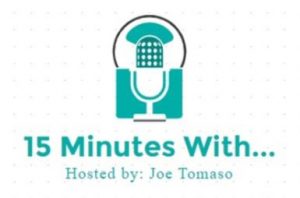
♦ In this 4-minute audio review, True Crimes podcast host Joe Tomaso (who suffers from hearing loss himself) packs in a lot of information. He brings anecdotes from his professional and personal lives to illustrate how much he likes the BeHear assistive hearing headsets. For example:
“As I’m hosting and doing production work and even editing my podcast, I am using both the BeHear ACCESS and the BeHear NOW personalized assistive hearing products. I have had traditional hearing aids and they cost me thousands of dollars. I also have used similar products that not only cost me a lot more than my BeHear devices, but they were big and clunky and not as comfortable. Also, they didn’t give me the personal hearing experience that matches BeHear.”
“My wife likes this as I’m not blasting the volume on the TV anymore.” – Joe Tomaso, True Crimes Podcast Host
“My BeHear devices are stylish and they help me hear better whether it’s live conversations, hearing better in public places, live music, cell phone calls or just listening to TV.”
“I really can’t say enough for these devices. Recently I was also able to hear birds chirping near sunrise. I have not been able to hear that sound even with my hearing aids and it’s not just what you can hear that counts. It’s what you’re missing out as well. I highly recommend these devices.”
Listen to Joe’s 4-minute review by clicking the link below:
To get our stories sent directly to your inbox, register here.
How to Alleviate Unnecessary Stress for the Elderly During the Pandemic
The Most Vulnerable Age Group to Catch the Virus is Also the Group Most Likely to Suffer from Hearing Loss

♦ Getting sick enough to see a health professional during these days of the Corona virus pandemic is stressful in its own right, but inability to hear the staff’s diagnosis or treatment strategy because you left your hearing aids behind is truly frustrating. What can be done?
While not being directly related, there is a strong correlation between the severity of symptoms for people infected with COVID-19 and hearing loss rates for different age groups. Both worsen quickly with age. Logically, this leads to a direct link between the number people being infected and admitted to hospitals, and the number of hospital patients with high levels of hearing loss.
Hearing aids are very expensive devices that are easy to lose and easy to fall into disrepair. Few people take their hearing aids with them when they rush to noisy emergency rooms, eventually limiting their abilities to communicate with the hospital staff and get the proper treatment. Not being able to hear and understand the situation also contributes to a condition called “delirium” which is an acute disturbance of mental abilities. This hospital-induced delirium typically results from the combination of stress from poor health, disorientation from being in an unfamiliar environment with strangers, disruption of routine, and absence of familiar faces.
We believe that Alango Wear & Hear products can provide a hearing enhancement solution that is affordable, durable, and easy to use in hospital conditions. It is also multi-functional, allowing patients to better understand the medical staff, communicate over the phone, enjoy music, and watch TV.
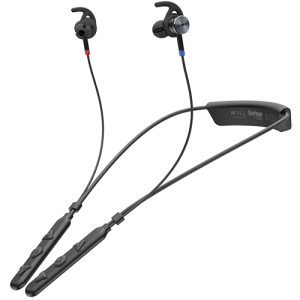 For example, BeHear® ACCESS is a stylish hearing amplifier for people who need enhanced hearing in specific situations. It looks (and functions) like a typical Bluetooth® stereo headset but also provides enhancement for all-around hearing (live conversations, mobile phone calls, music play, ambient hearing), as well as assistive listening functionality. A dedicated free smartphone app allows wearers to fine-tune sound in real-time, and built-in Telecoil receivers ensure best possible hearing in locales equipped with hearing loop technology.
For example, BeHear® ACCESS is a stylish hearing amplifier for people who need enhanced hearing in specific situations. It looks (and functions) like a typical Bluetooth® stereo headset but also provides enhancement for all-around hearing (live conversations, mobile phone calls, music play, ambient hearing), as well as assistive listening functionality. A dedicated free smartphone app allows wearers to fine-tune sound in real-time, and built-in Telecoil receivers ensure best possible hearing in locales equipped with hearing loop technology.
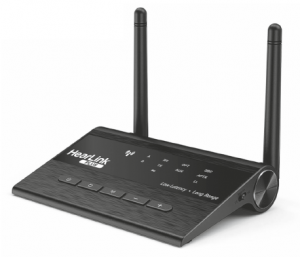
The BeHear ACCESS headset can be paired with HearLink® PLUS, a Bluetooth® transmitter that streams audio directly from the television’s analog or digital (optical) sound source to the viewers ears. Ambient noises, room reverberation, and other types of sound interference which hamper intelligibility of speech and music appreciation are eliminated. Other residents of the hospital ward (or household) will appreciate the fact that the TV volume doesn’t disturb them. The transmitter pairs seamlessly with Wear & Hear assistive hearing headsets, ensuring that each viewer benefits from personalized audio that can be fine-tuned in real-time using the dedicated W&H BeHear smartphone app.
To get our stories sent directly to your inbox, register here.

